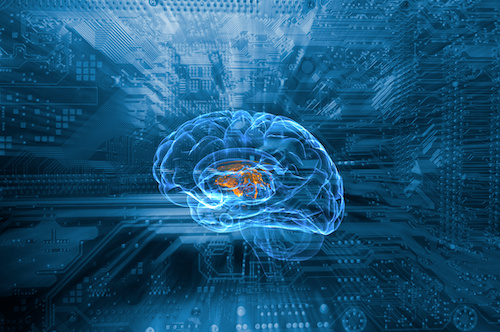Key points:
- Balancing innovation with ethical considerations is crucial to harness the full potential of AI for the betterment of education
- Learn about the impact of artificial intelligence in education
- Discover more about why AI in education is essential for learning
The integration of AI in education brings both benefits and risks. While AI enhances engagement, personalizes learning, and provides valuable insights, concerns arise regarding data privacy, ethical considerations, and the potential impact on human interaction in the educational process. Striking a balance is crucial for its effective implementation.
What are the benefits of artificial intelligence in the education sector?
As we examine the benefits of artificial intelligence in education, we must acknowledge that AI brings multifaceted benefits to the education sector beyond personalized learning, automation, or tutoring. AI facilitates efficient administrative tasks, reducing the burden on educators by handling routine processes such as scheduling, grading, and resource management. It enables the development of intelligent content creation tools, revolutionizing how educational materials are generated, curated, and adapted to diverse teaching methodologies.
Moreover, AI’s data analytics capabilities provide educators and administrators with valuable insights into overall institutional performance, enabling evidence-based decision-making. AI-powered tools can aid in identifying gaps in curriculum design, helping institutions refine their teaching strategies. Additionally, AI contributes to the evolution of assessment methods, offering new ways to measure students’ understanding and skills beyond traditional testing.
Furthermore, AI can foster collaborative learning environments by facilitating communication and resource-sharing among students and educators. The integration of AI in educational games and simulations enhances experiential learning, making complex subjects more accessible and engaging.
Embracing AI’s potential in these diverse applications holds the promise of optimizing educational processes, improving institutional efficiency, and preparing students for the evolving demands of the modern world.
What are the 5 advantages and 5 disadvantages of artificial intelligence?
Advantages of artificial intelligence in education:
- Personalized learning paths: AI enables the creation of personalized learning experiences, adapting content and pacing to individual student needs, enhancing understanding, and addressing diverse learning styles.
- Efficient administrative tasks: AI automates administrative tasks, including grading, scheduling, and data management, allowing educators to allocate more time to teaching and student interaction.
- Data-driven insights: AI analytics provide educators with valuable insights into student performance and learning patterns, helping to identify areas for improvement and tailor instructional strategies accordingly.
- Innovative teaching tools: AI-powered educational tools, such as virtual reality and simulations, create immersive and engaging learning experiences, making complex subjects more accessible and enhancing comprehension.
- Global accessibility: AI facilitates remote learning, breaking down geographical barriers and providing educational opportunities to students worldwide, fostering inclusivity and access to quality education.
Disadvantages of artificial intelligence in education:
- Privacy concerns: The collection and analysis of student data by AI systems raise privacy concerns, necessitating strict measures to safeguard sensitive information.
- Dependence on technology: Overreliance on AI may diminish critical thinking and problem-solving skills in students, as they become accustomed to technology-driven solutions.
- Cost of implementation: Introducing AI in education can be expensive, limiting access to advanced technologies for schools with limited resources.
- Potential for bias: AI algorithms may inadvertently perpetuate biases present in training data, leading to unequal educational opportunities and outcomes for different groups of students.
- Teacher and student resistance: Resistance or discomfort with technology, both among teachers and students, can hinder the effective implementation of AI in the educational setting. Educators need proper training to integrate AI tools successfully.
Does AI benefit or hurt the field of education?
The impact of AI on education, and the advantages and disadvantages of artificial intelligence in education, are nuanced, presenting both benefits and challenges. AI benefits education by offering personalized learning experiences, automating administrative tasks, and providing valuable insights through data analytics. It enhances efficiency, global accessibility, and the development of innovative teaching tools. However, challenges include concerns about data privacy, potential biases in AI algorithms, and the risk of job displacement for educators. The quality of education depends on responsible AI implementation, addressing ethical considerations, and ensuring equitable access.
Ultimately, AI has the potential to significantly benefit education by optimizing processes, improving learning outcomes, and preparing students for the demands of a rapidly evolving world. However, its success hinges on a careful balance between harnessing technological advancements and preserving the essential human elements in the educational experience.
How can AI disrupt education?
Looking to the future of AI in education, AI can disrupt education by revolutionizing traditional teaching methods. It introduces personalized learning experiences, adapts to individual student needs, and automates administrative tasks, reshaping the roles of educators. AI-driven analytics provide unprecedented insights into student performance, allowing for data-driven decision-making. Virtual reality and simulations enhance experiential learning, challenging conventional classroom structures. However, AI’s potential to replace certain tasks may lead to job displacement for educators, raising concerns. Ethical considerations, data privacy issues, and the need for equitable access also emerge as potential disruptions. Striking a balance between AI integration and maintaining human-centric educational values is essential.
Conclusion
The integration of AI in education presents profound benefits, such as personalized learning and improved efficiency. However, it introduces risks like data privacy concerns and potential biases. Balancing technological innovation with ethical considerations is crucial to harness the full potential of AI for the betterment of education.
- Classroom Learning - April 5, 2024
- Advantages and Disadvantages of Classroom Management - April 5, 2024
- What are Disadvantages of Classroom Management? - April 5, 2024

